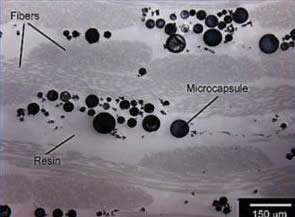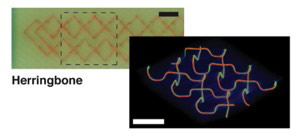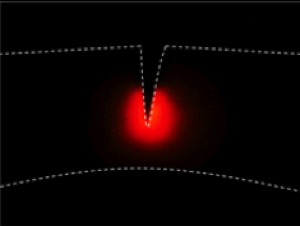Self-healing Materials
Self-healing materials repair and restore their functionality in an autonomic fashion (i.e. automatic without human intervention). They are triggered by an environmental stimulus such as a change in pH, UV light, or most often, by mechanical damage like a microcrack. We pursue three conceptual approaches to self-healing including microcapsule-based systems in which reactive species (healing agents) are sequestered in core-shell microcapsules and dispersed within the host material, microvascular-based systems in which a vascular network isolates the healing agent, and mechanochemical systems in which force-sensitive molecular units (mechanophores) are incorporated within a polymer backbone or as crosslinks in a polymer matrix.

Microcapsule-based Systems
Microcapsule-based systems sequester the healing agent in discrete capsules.

Microvascular Healing
Taking inspiration from biological materials, microvascular self-healing materials utilize hollow internal networks filled with fluidic healing agents to achieve repetitive healing events.
Regenerative and Remodeling Systems
Our group is pioneering the development of new synthetic material systems that mimic the regenerative and remodeling capabilities of biological systems.

Mechanochemical Systems
Mechanochemically active polymers undergo a chemical reaction (fluorescence, healing, etc.) in response to mechanical stress.
